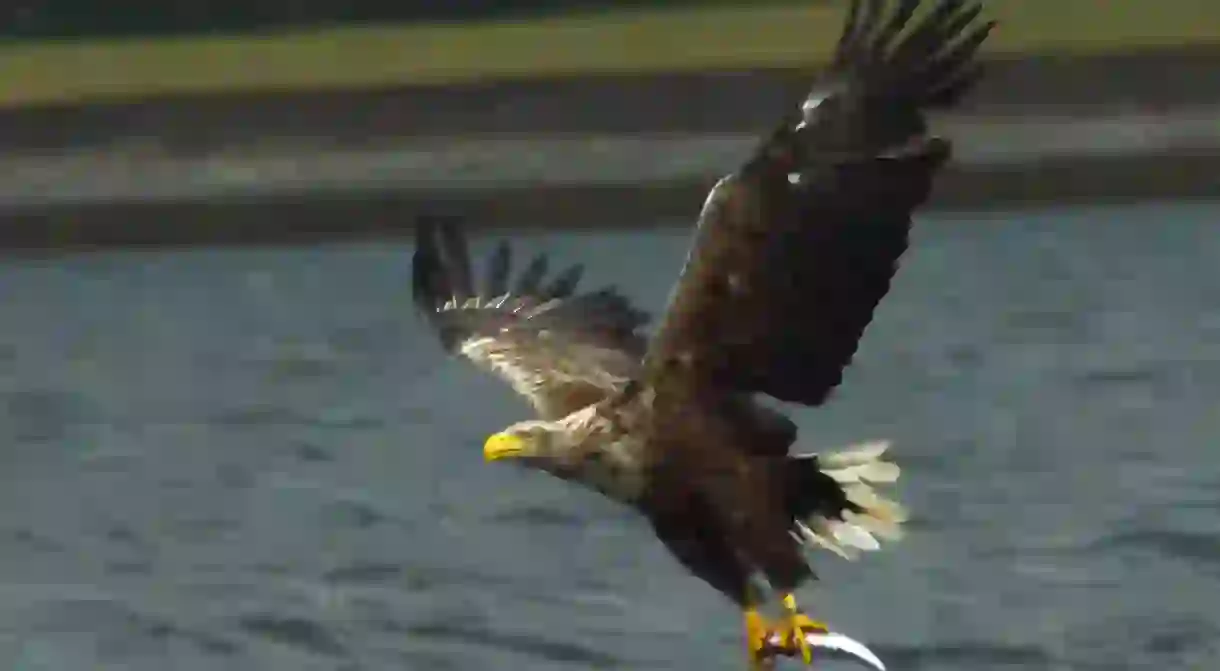A Guide to Birdwatching in Scotland

Many people love to watch birds, whether those that visit their local area or those they see on holiday. Some take their birdwatching to a completely different level, even chartering planes in order to arrive in time to catch a glimpse of a seriously off-course rarity. Fortunately, Scotland is well set-up to cater to both these groups. Here’s our guide to where to watch birds, and what to look out for, as well as some handy tips and ideas of tours available.
Scotland is a land of diverse landscapes, from rolling farmland to vast and flat blanket bogs, thousands of miles of coastline to the highest peaks in Britain, and beautiful woodlands to the purple heather-clad uplands. It’s all here and each habitat attracts different birds.

If you only have a passing interest in birdwatching, the best thing you can do is research the destination you are heading to and take your binoculars and maybe a camera. However, if you are coming to Scotland specifically to watch birds, then it is easier to choose a destination based on the species you hope to see. For example, many people want to see the elusive and rare capercaillie, or the characterful Scottish subspecies of the crested tit. In this case they would need to go to the Caledonian pineforests, such as those still to be found in the Cairngorms, or places like Glen Affric.

Other people long to see puffins or watch gannets and terns fishing offshore. If this is the case, then Caithness, Aberdeenshire, or Orkney will suit best. Golden eagles and many other birds of prey are to be found in the upland areas along with specialised mountain birds, such as ptarmigan, whereas the white-tailed sea-eagle, although increasing in its range, is best seen near the sea on the west coast, such as the Isle of Mull.

Increasingly, companies are offering package tours, including accommodation and an expert guide (and sometimes the loan of expensive optics). These tours are not cheap, even if only booked for a day, but the guides really do know where to see all those elusive species visitors love to spot. Examples of companies with excellent reputations include Heatherlea, and Speyside Wildlife. However, with a little patience and a lot of reading, it is entirely possible to plan your own itinerary for much cheaper, perhaps even wild camping along your chosen route.

Scotland also has many nature reserves, such as those run by the Royal Society for the Protection of Birds, and a great way to see species is to visit these. Here you can usually find expert volunteers and staff, who are more than happy to tell you what you can see, and where. An excellent example of this is at the new observation tower in the Flow Country at Forsinard, where the visitor can see an array of bog and moorland species and learn all about this crucial and rare habitat. In winter, at night, the tower is also used as a dark sky site, to view the stars and spectacular northern lights.

Another famous RSPB reserve activity is osprey viewing at Loch Garten. Here, in spring and summer, you are almost guaranteed (with a little patience) views of the ospreys, and there is always a live webcam of the nest too! Set in the beautiful surroundings of the Cairngorms, only about 20 minutes from Aviemore (a popular place for birdwatchers to stay) and 50 minutes from the capital of the Highlands, Inverness, Loch Garten attracts many people every year. They have excellent programmes for children too, with activities including bark rubbing and nest building!

Ospreys arrive in early spring, then spend the summer fishing, raising young, before leaving for Africa in late summer and early autumn. Scotland is home to many other such migrants, some of which, like the redstart, stay for summer, and others, like whooper swans, come for the winter. This seasonal influx means that spring and autumn are exciting times for the birdwatcher in Scotland, with many species coming and going. Strong winds at this time of the year also increase the chance of rarities, such as when the first European record of a female American red-winged blackbird arrived on the island of North Ronaldsay in Orkney, in May 2017. A common bird in America, the female is unremarkable in colouring, but her presence encouraged people to flock to the island to catch a glimpse.

An added bonus to birdwatching in Scotland is that it can be carried out while looking for other wildlife, or admiring the stunning scenery. The traditional outdoor sports the Victorians popularised in Scotland, such as hunting and fishing, have also left an ideal infrastructure for hunting with a camera, rather than a gun. Remote hunting lodges are being turned into wildlife centres and hotels for tour groups, former gamekeepers are being re-employed as guides, their local knowledge invaluable. Birdwatching, and wildlife watching in general, is becoming an increasingly prosperous economic activity in areas that have seen deprivation and a lack of jobs. Crucially, landscapes are now being preserved and also restored, such as the Caledonian pinewoods, which suffer from deer overgrazing.

A birdwatching tour of Scotland, whichever area or species you decide to target, is an experience that will remain with you, and many birdwatchers keep coming back, eager to tick off new species!













